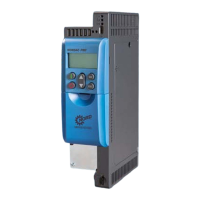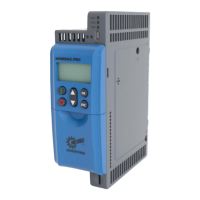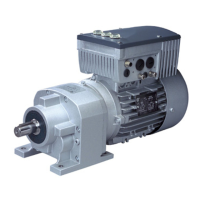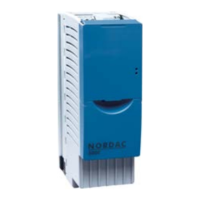4 Function description
BU 0210 en-3117 49
Pos: 17 9 /Anl eit ung en/El e ktroni k/ POS ICON /4. F unkt ions bes chr eib ung/ Glei chl auf /Üb er wach ungs fu nkti one n_0 1 @ 1 4\mod_1478702983333_388.docx @ 2302755 @ 3 @ 1
4.9.5 Monitoring functions
Pos: 18 0 /Anlei tung en/El ektr onik/P OSICON /4. Funkti onsbes chr eibung/ Gleic hlauf /Über wach ungs funkti onen_ 02_Er reic hbare Genaui gkeit en / Lage über wachung @ 14\mod_1478703014566_388.docx @ 2302791 @ 4 @ 1
4.9.5.1 Achievable precision of position monitoring
The deviation between the master and the slave can be monitored by the slave with the status
message "Position Reached" (e.g.: P434, setting 21). The achievable precision of this message and
therefore the deviation of the master and slave drives depends on several factors. Here, in addition to
the settings of the speed control and the position control, the path, i.e. the drive or the mechanics of
the system, play a decisive role.
The minimum value of the achievable precision is however determined by the type of transmission. A
deviation of at least 0.1 rotations should be expected. In practice, a value of more than 0.25 motor
rotations should be planned for. The message "Position reached" is deleted if the value which is set in
P625 "Output hysteresis" is exceeded or the difference between the specified and actual speed
exceeds 2 Hz + P104. The minimum frequency for the slave can be calculated with the following
formula:
P104 = 0.25 ... 1,0 * (P625 [Rotation] * 4,0 Hz * P611 [%]) – 2 Hz
With a permissible deviation of one rotation and a value in "Position controller P" (P611) of 5 % this
results in a speed component for the position control of 20 Hz. If P104 is set to a considerably lower
value, the status message is determined by the exceeding of the speed by the slave and not by the
maximum deviation in position. This especially applies, the shorter the ramp times are set for the
slave.
Pos: 18 1 /Anlei tung en/El ektr onik/P OSICON /4. Funkti onsbes chr eibung/ Gleic hlauf /Über wach ungs funkti onen_ 03_M astera bsch altung bei Slave – Fehler oder L ages chl ep pfehl er @ 1 4\mod_1478703857032_388.docx @ 2302827 @ 4 @ 1
4.9.5.2 Master switch-off on slave error or position slip error
With a master – slave coupling, errors in the master are automatically dealt with by communication of
the position to the slave. As long as the communication is intact, a synchronisation fault is ruled out in
case of an error in the master. The slave regulates to the position of the master without hindrance.
However, if the slave cannot follow the specified position of the master, or if the slave goes into an
error state, corresponding information and an associated response by the master is required. This can
be either via a higher level control unit or by implementing a second communication channel between
the slave and the master. For this, the slave frequency inverter sends the master the bit "Position
reached" and/or "Fault", each as a Bus IO Bit. The master can use this signal, e.g. to initiate an
emergency stop, or to change to the "Fault" state and shut down.
Example
• A fault occurs in the slave. The device changes to the operating state "Fault". As a result of this the
master immediately changes to the operating state "Fault".
• The slave cannot follow the master due to mechanical jamming. The parameterised slip error limit
is exceeded, i.e. the status message "Position reached" on the slave is deleted). The master stops.
The master can only be re-enabled if the slave device is again within the specified tolerance.
The following settings are required in order to set up the necessary second communication channel:
Master frequency inverter
Deceleration time fault with slave
Watchdog time = 0 “Customer error”

